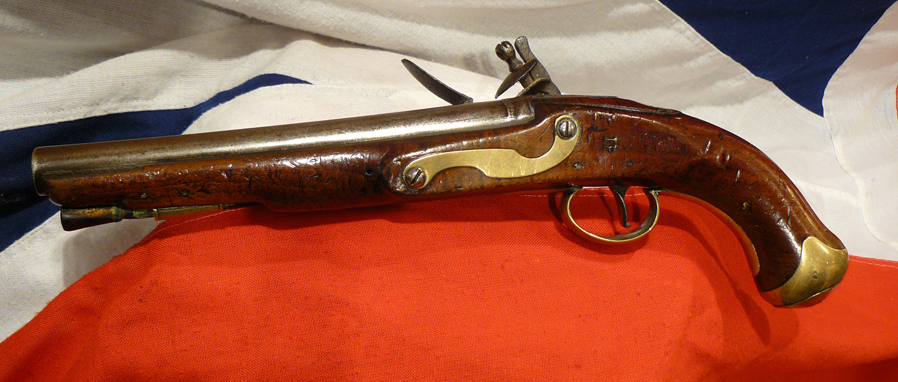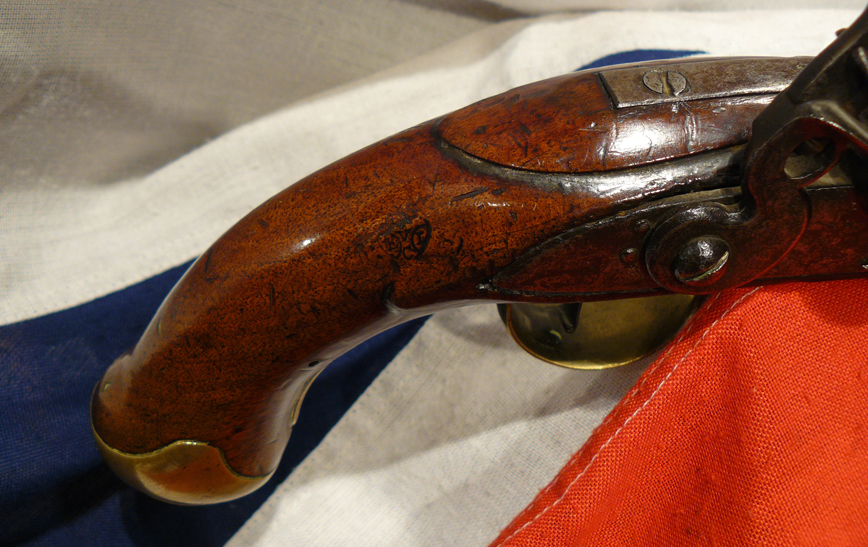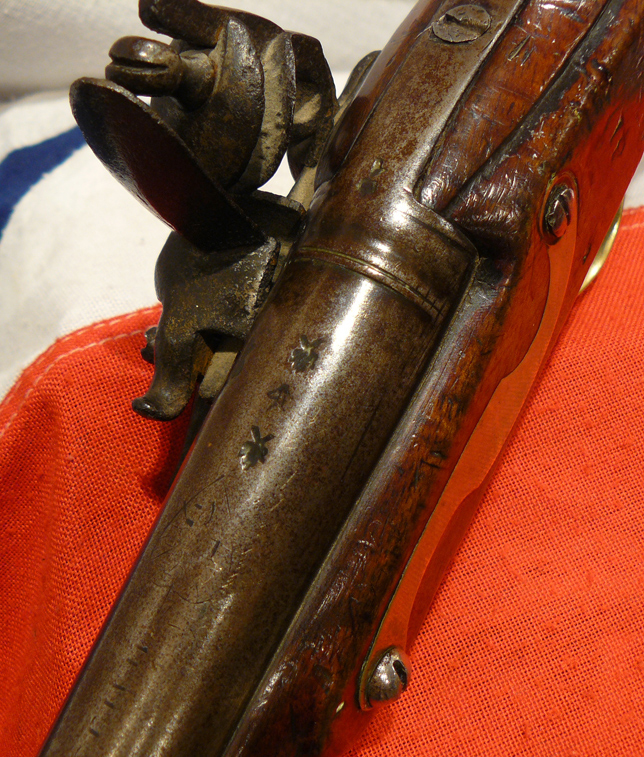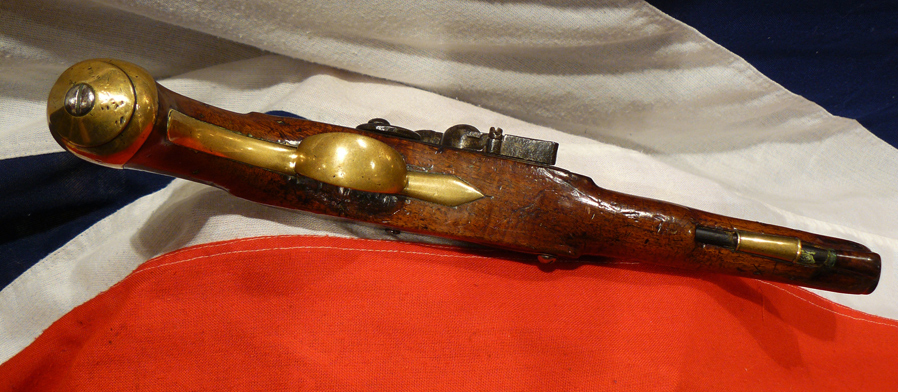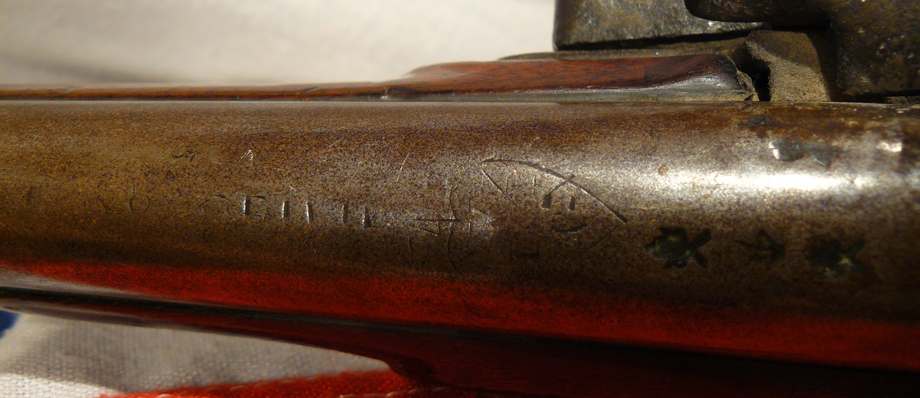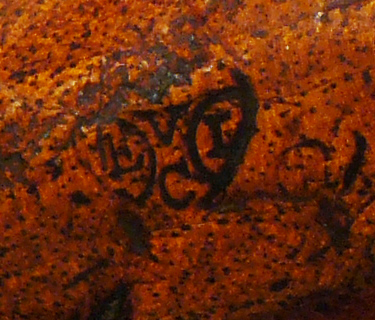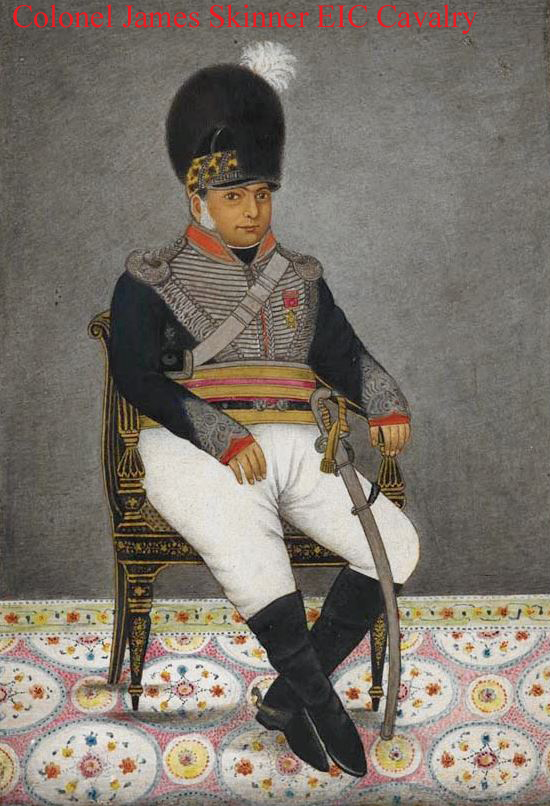A Stunning King George IIIrd 1756 Pattern Light Dragoon Flintlock Pistol, 19th & 25th Light Dragoons, Part of The East India Company Cavalry Contingent Combating the ‘Tiger of Mysore’ Tipu Sultan
With finest walnut stock with amazing natural age patina, and traditional brass furniture and two British EIC traditional ‘heart’ marks, one on the stock the other on the barrel. From the historical 'Siege of Seringapatam' used by the British 19th & 25th Light Dragoons, serving with the East India Company. The 19th played a major role in the Anglo-Mysore Wars and Anglo-Maratha Wars. Their first campaign was against Tipu Sultan of Mysore from 1790 to 1792. After defeating Tipu, the 19th were on garrison duty until 1799 when war broke out with Tipu again. This time, the Sultan was killed during the Battle of Seringapatam.
Tipu Sultan was the ruler of the Kingdom of Mysore in Southern India. An enemy of many of his neighbours as much as he was of the British East India Company.
Tipu remained an implacable enemy of the British East India Company, sparking conflict with his attack on British-allied Travancore in 1789. In the Third Anglo-Mysore War, he was forced into the Treaty of Seringapatam, losing a number of previously conquered territories, including Malabar and Mangalore. He sent emissaries to foreign states, including the Ottoman Empire, Afghanistan, and France, in an attempt to rally opposition to the British.
In 1800, the 19th fought Dhoondia Wao's rebel army and in 1803, led by Major-General Arthur Wellesley (who later became the Duke of Wellington), they participated in the Battle of Assaye. In this battle, the outnumbered British troops defeated a Maratha army and the regiment was subsequently awarded the battle honour of "Assaye" and presented with an honorary colour.
They were stationed at Cheyloor in 1802, at Arcot in 1803, in Bombay in 1804, and at Arcot again from 1805 to 1806. The regiment was summoned to Vellore on the night of 10 July 1806 to rescue the 69th Regiment of Foot who had been the victims of a revolt by Indian sepoys. The 25th Dragoons (raised for service in India by F E Gwyn on 9 March 1794) was renumbered 22nd (Light) Dragoons in that year. This 22nd (Light) Dragoons regiment served throughout the Napoleonic Wars, which began in 1805, and was disbanded in 1820.
Hyder Ali and Tipu Sultan, the rulers of the Kingdom of Mysore, offered much resistance to the British forces. Having sided with the French during the Revolutionary war, the rulers of Mysore continued their struggle against the Company with the four Anglo-Mysore Wars. Mysore finally fell to the Company forces in 1799, with the death of Tipu Sultan.
Napoleon and Tipu Sultan
In 1794, with the support of French Republican officers, Tipu allegedly helped found the Jacobin Club of Mysore for 'framing laws comfortable with the laws of the Republic'. He planted a Liberty Tree and declared himself Citizen Tipoo. In a 2005 paper, historian Jean Boutier argued [likely wrongly] that the club's existence, and Tipu's involvement in it, was fabricated by the East India Company in order to justify British military intervention against Tipu.
One of the motivations of Napoleon's invasion of Egypt was to establish a junction with India against the British. Bonaparte wished to establish a French presence in the Middle East, with the ultimate dream of linking with Tippoo Sahib. Napoleon assured the French Directory that "as soon as he had conquered Egypt, he will establish relations with the Indian princes and, together with them, attack the English in their possessions." According to a 13 February 1798 report by Talleyrand: "Having occupied and fortified Egypt, we shall send a force of 15,000 men from Suez to India, to join the forces of Tipu-Sahib and drive away the English." Napoleon was unsuccessful in this strategy, losing the Siege of Acre in 1799 and at the Battle of Abukir in 1801. It was, as with all Napoleon’s ‘alliances’ simply a way to remove Britain’s ability to oppose his own Empire ambitions. His term ‘establish relations’ has been used for centuries since by controlling despots as a benign appearing phrase that is actually in reality an umbrella term for ‘control and dominate’.
It has been said in numerous quarters, especially by denigrators of the former British Empire, that the magnificent sub continent of India suffered much under British rule, however let’s not forget prior to the British arrival, and even during, despite their best efforts, India had been ruled with an iron fist for millennia by dozens of kings, nawabs, maharajahs, and princes who had stripped so much wealth from India that many became the richest men on earth, some worth 10 or 100 times the worth of the billionaires of today. So much wealth it is almost inconceivable to understand and comprehend today. There were of course a few benign and caring rulers, but as a rule they were deposed, murdered or imprisoned, often by sons with a somewhat less ‘sympathetic nature’ to their subjects.
As with all our antique guns no license is required as they are all unrestricted antique collectables. Very good and tight action. A horn tipped ramrod. As with all our antique guns they must be considered as inoperable with no license required and they are all unrestricted antique collectables
Code: 22429
1895.00 GBP


